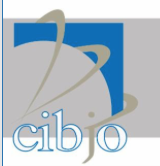Articles and News
CIBJO Releases Laboratory-Grown Diamond Guidance For Review By Trade October 13, 2020 (0 comments)

Milan, Italy—CIBJO, the World Jewellery Confederation, has released a Laboratory-Grown Diamond Guidance document for review by officers and members of affiliated national associations and representatives of commercial members. This is the final stage of a more than two-year process to create a harmonized set of operating standards and principles for the laboratory-grown diamond sector.
Intended to assist all professionals handling laboratory-grown diamonds, the primary purpose of the guidance document is to protect and enhance consumer confidence. It was compiled by a committee of representatives from both the laboratory-grown diamond sector and the natural diamond sector.
A key principle of the Laboratory-Grown Diamond Guidance is that consumers must receive complete and unambiguous information about what they are buying, so that they can make consciously informed purchasing decisions. This requires clear and accurate information that the diamonds were created industrially, and not through geological processes.
The laboratory-grown diamond sector and natural diamond sector operate via different business models, with the relationship between color, clarity and weight on the one side, and rarity on the other. Color, clarity and weigh are subject to the control of the lab-grown diamond manufacturer, whereas rarity is a critical factor in setting the price of a natural diamond and in deciding its long-term value trajectory.
Divided into various sections, the guidance document outlines clear principles for describing laboratory-grown diamonds, and well as due diligence measures that should be followed by companies handling LGDs and at events where they are displayed, like trade shows. It furthermore recommends the disclosure methodology and verbiage for loose lab-grown diamonds or jewelry set with lab-grown diamonds, on sales invoices and consignment documents. The document also addresses the subject of laboratory-grown diamond detection technology.
A key section of the document relates to the services provided by gem labs to the laboratory-grown diamond sector. It contends that the confidence of consumers will be served by receiving an accurate and objective report of the characteristics of the laboratory-grown stone that they are buying but, since these are unrelated to rarity, care should be taken that the report itself does not infer a similarity between a laboratory-grown diamond and a natural diamond. The report, therefore, is referred to as a “Laboratory-Grown Diamond Product Specification,” and not a grading report.
Since a manufactured product is involved, the guidance document recommends that Laboratory-Grown Diamond Product Specification reports include other information that is not provided on standard natural diamond grading reports. This includes the name of the manufacturer, the production batch, the country of manufacture, the method of manufacture (HPHT or CVD), and information about treatments and processes to which the stone was subject after its original manufacture.
The guidance document recommends that, if the Four Cs are used by a laboratory to describe the physical characteristics of laboratory-grown diamonds, the letters “LG” should be placed as a prefix before color and clarity. Certain countries require that OIML/Legal Units of Measurement be used to describe the weight of laboratory-grown diamonds, and here the guidance document recommends that the report notes both the stone’s standard carat weight and its weight in grams.







